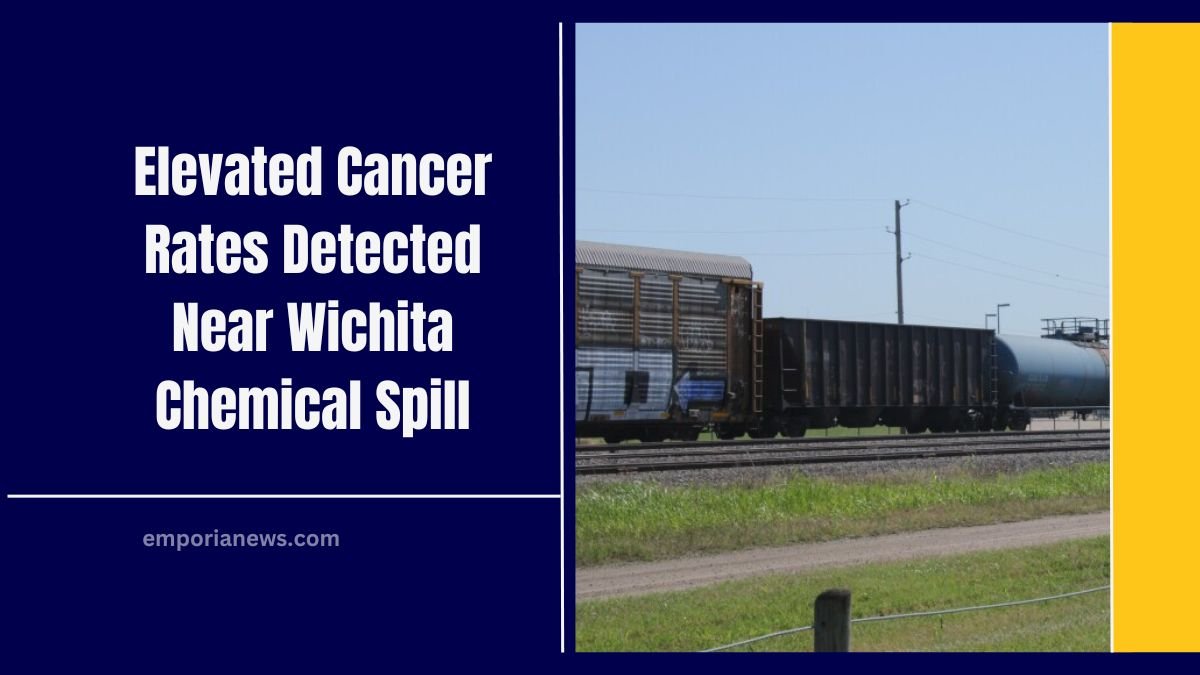In April 2023, the Kansas Department of Health and Environment (KDHE) published a health study revealing elevated rates of liver cancer among residents in northeast Wichita, particularly in areas surrounding the 29th and Grove site.
This site had been contaminated decades earlier by a trichloroethylene (TCE) spill, leading to a significant groundwater pollution plume.
However, recent clarifications from KDHE regarding the study’s geographic focus have raised questions about the accuracy and applicability of these findings.
Background of the Contamination
The contamination at 29th and Grove originated from a spill at the Union Pacific Railroad rail yard, located south of the K-96 Highway between I-135 and Grove Street.
Discovered in 1994, the spill led to a 2.9-mile-long groundwater plume extending southward through several of Wichita’s historically Black neighborhoods.
The primary contaminant, TCE, is a chemical commonly used in manufacturing and is recognized as a carcinogen. Exposure to TCE has been associated with various health issues, including liver cancer and adverse birth outcomes.
Initial Study Findings
KDHE’s 2023 health study analyzed data from 2,793 addresses within the area affected by the groundwater plume.
The study reported a liver and biliary tract cancer diagnosis rate of 15.7 per 100,000 individuals, nearly double the rate observed in Sedgwick County as a whole.
Notably, the incidence of liver cancer among non-Hispanic Black residents in the area was more than twice the rate compared to the same demographic across Kansas.
Reevaluation of Study Parameters
Subsequent communications from KDHE have indicated that the study’s analysis encompassed two ZIP codes: 67214 and 67219.
While these ZIP codes include the addresses above the contaminated groundwater plume, they also cover additional areas not directly impacted by the spill.
This broader scope has led to concerns that the study’s findings may not accurately reflect the health impacts specific to the contamination zone.
Sedgwick County Commissioner Jim Howell expressed apprehension, stating, “There may be higher incidences in that plume, but we can’t know that because we’re taking in this very large geographic area… So we’re left with a giant question mark. We don’t really know what the data is telling us.”
Community Concerns and Calls for Clarity
The ambiguity surrounding the study’s geographic focus has prompted community leaders and residents to seek more precise analyses.
State Representative Ford Carr, representing parts of the affected area, emphasized the need for transparency, suggesting that the study should have clearly stated its reliance on data from the two ZIP codes.
Community activist Aujanae Bennett and others have advocated for a more targeted study that examines cancer rates specifically within the boundaries of the groundwater plume. Such an analysis could provide clearer insights into the direct health impacts of the contamination.
Health Implications of TCE Exposure
TCE exposure poses significant health risks. The Environmental Protection Agency (EPA) has identified TCE as a carcinogen, with strong evidence linking it to kidney cancer and some evidence associating it with liver cancer.
Additionally, certain studies suggest that TCE exposure may lead to low birth weights, although these findings often involve concurrent exposure to other chemicals.
Current Risk Assessment for Residents
The primary risk to residents arises from the potential consumption of contaminated groundwater.
However, the City of Wichita’s public water supply, which services the area, is safe to drink. KDHE has identified instances where private wells within the plume area were used for water consumption; in such cases, residents were provided with bottled water to mitigate exposure.
Another concern is vapor intrusion, where TCE evaporates from contaminated groundwater and infiltrates indoor air spaces.
Testing conducted in homes and buildings above the plume in previous years did not detect TCE concentrations exceeding state indoor air quality standards. However, it’s noteworthy that these standards have become more stringent over time, and earlier tests may not have met current criteria.
The initial KDHE study highlighting elevated liver cancer rates in northeast Wichita has brought attention to potential health risks associated with the 29th and Grove chemical spill.
However, subsequent revelations about the study’s broader geographic scope have introduced uncertainties regarding the direct impact of the contamination.
To ensure the well-being of the community, it is imperative to conduct more focused research, clearly define study parameters, and maintain transparent communication with residents.
Such efforts will help in accurately assessing health risks and implementing effective public health interventions.




